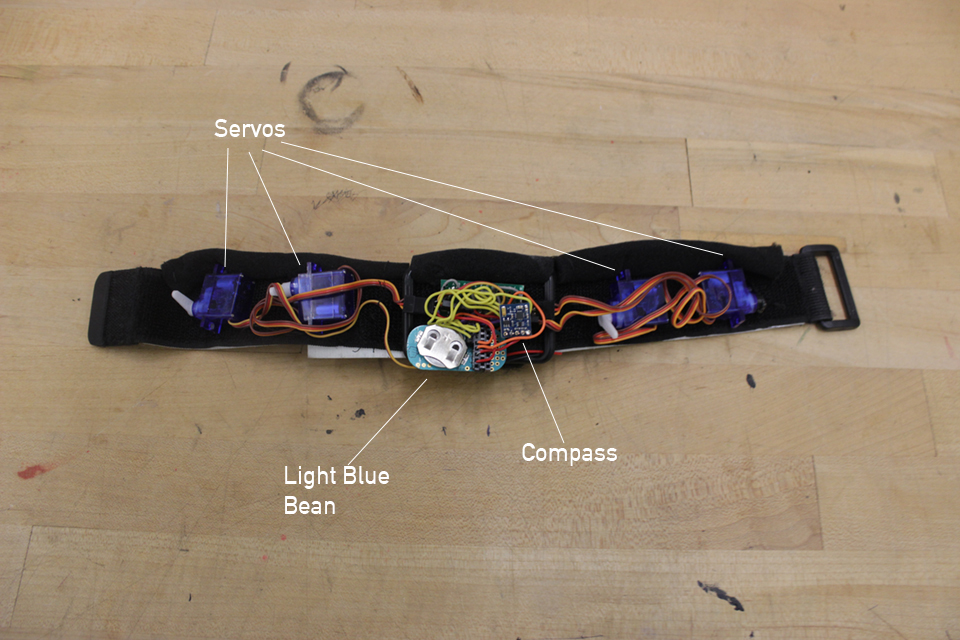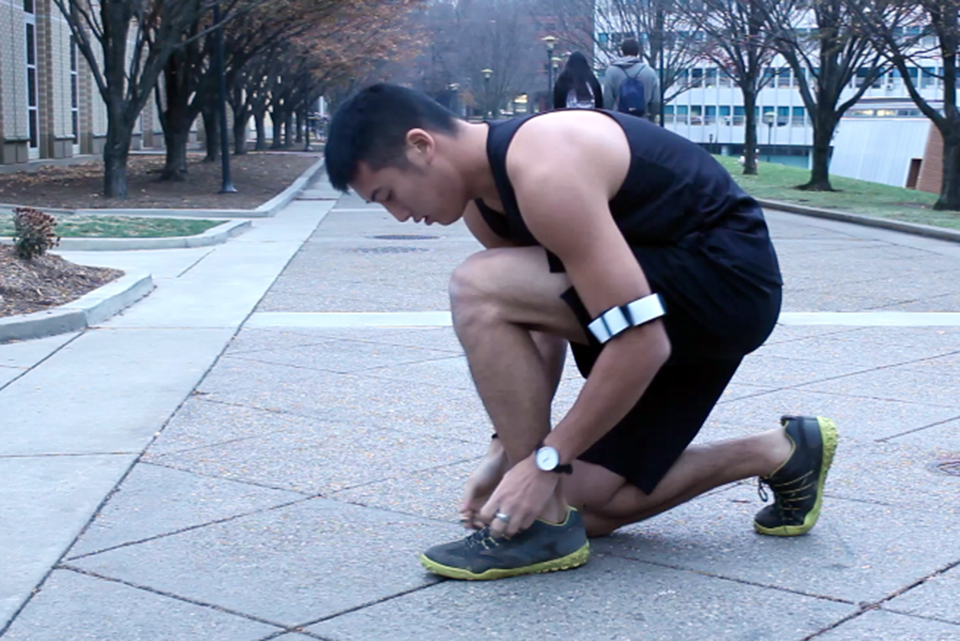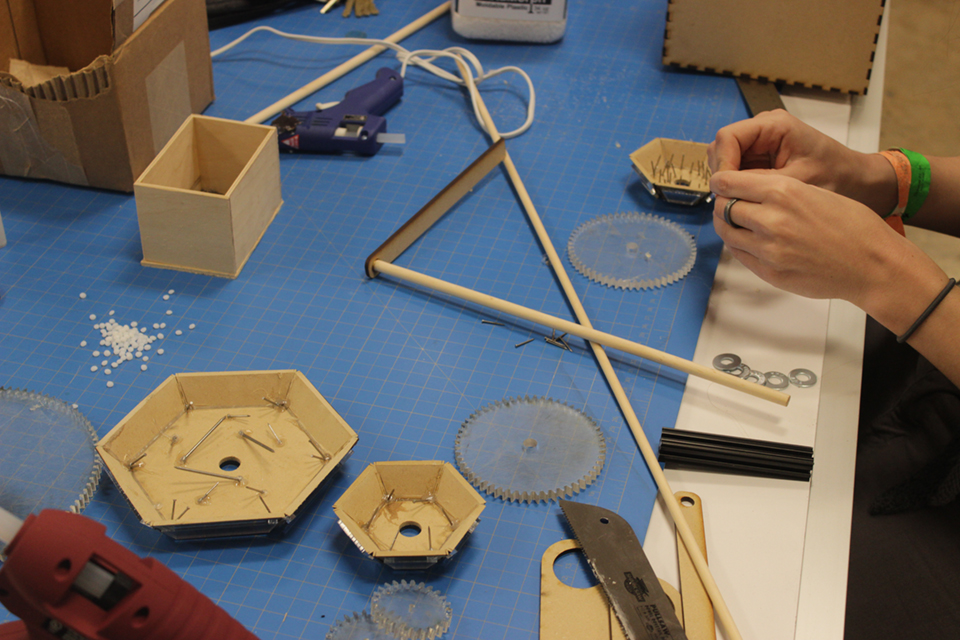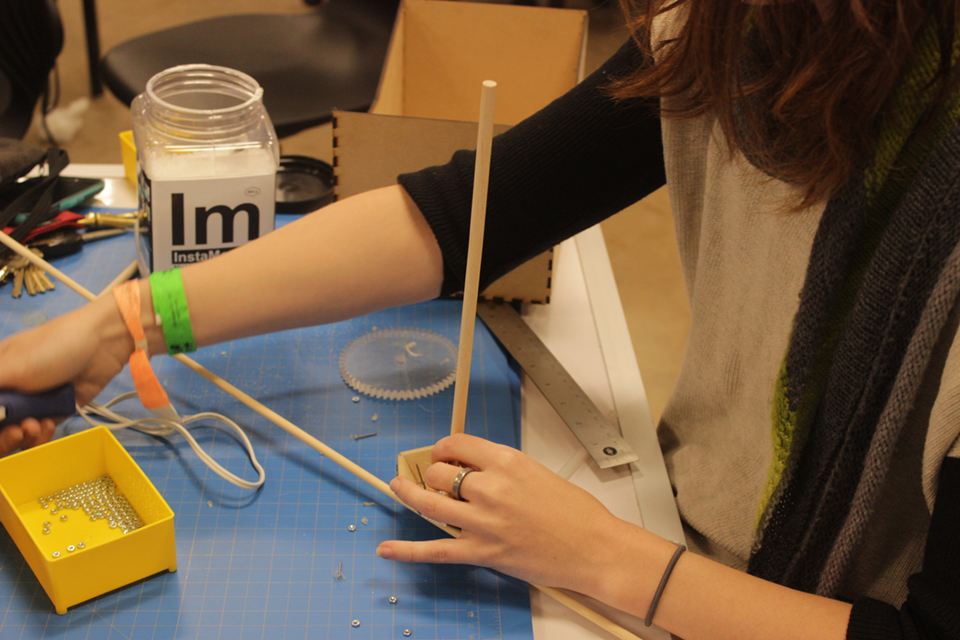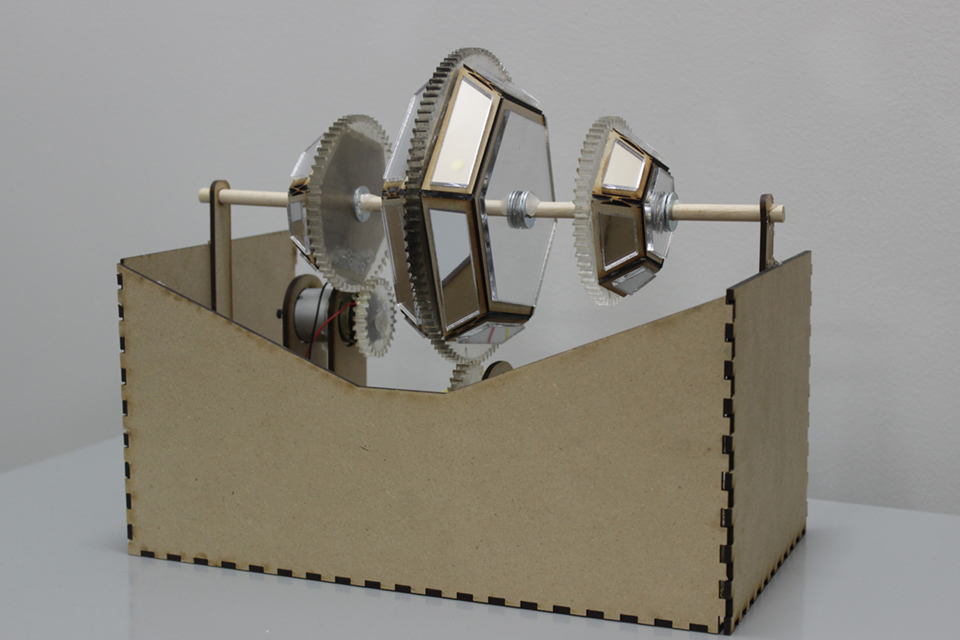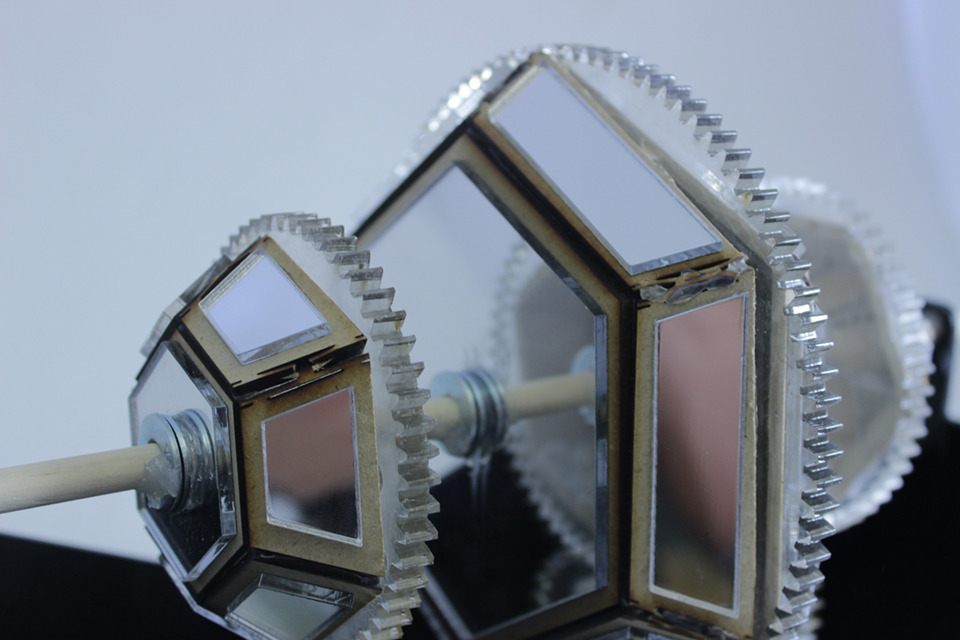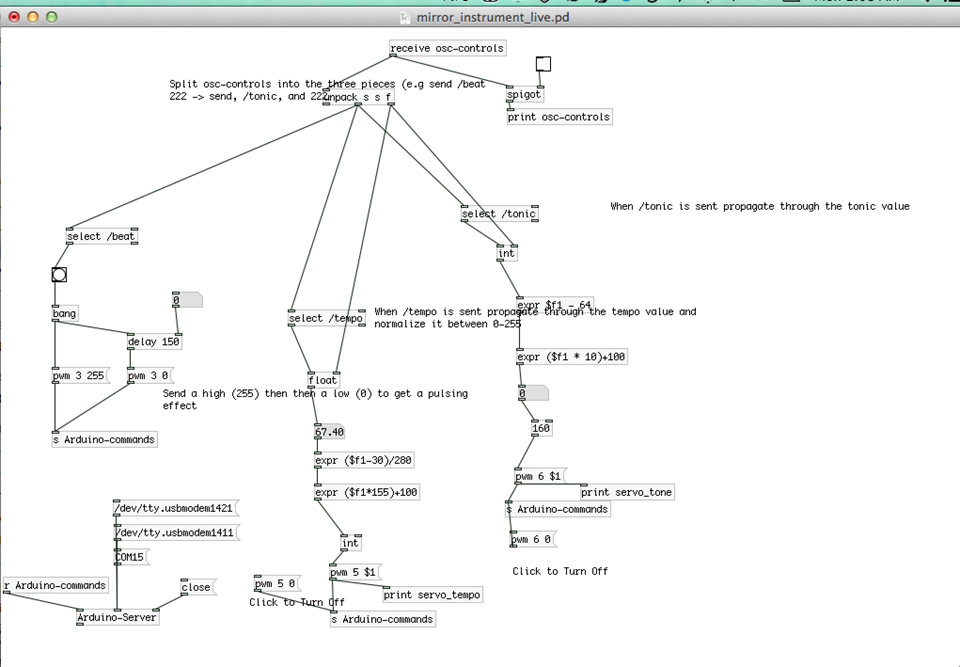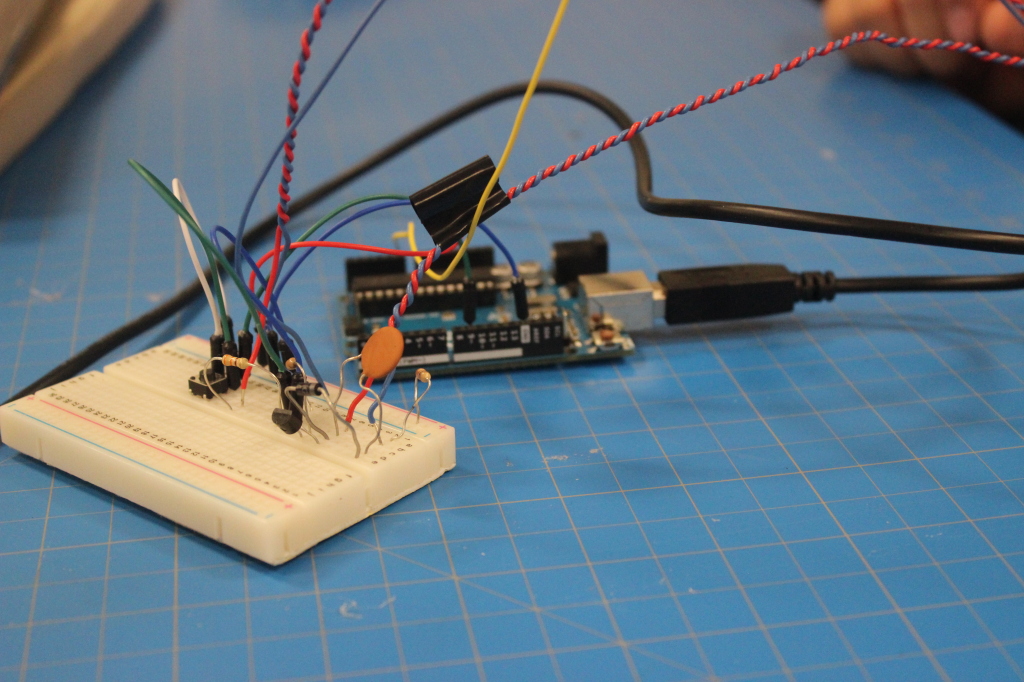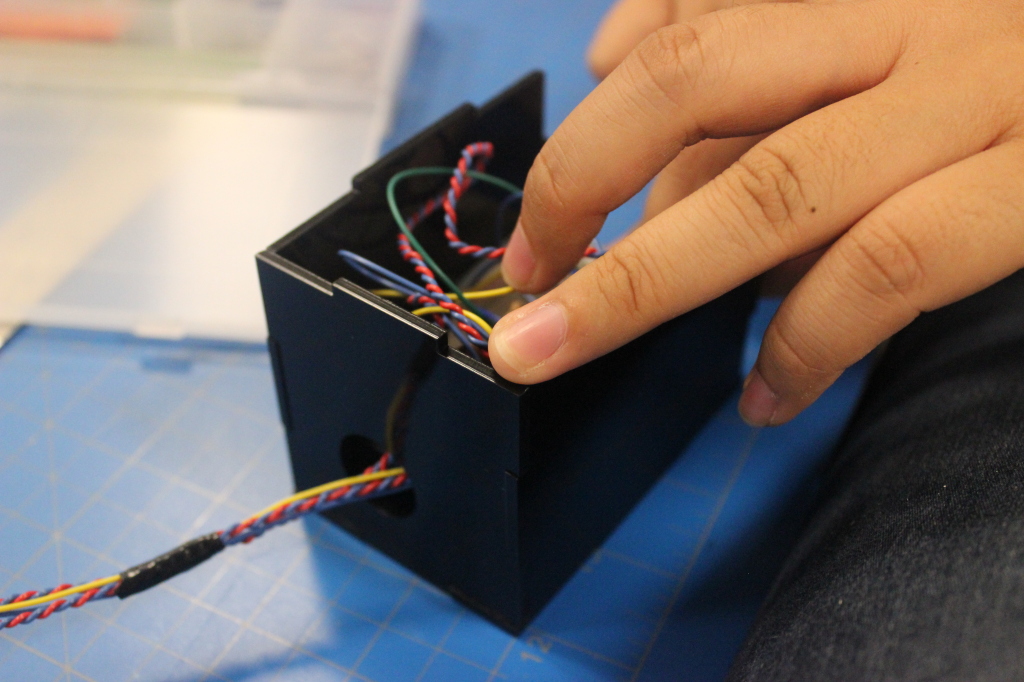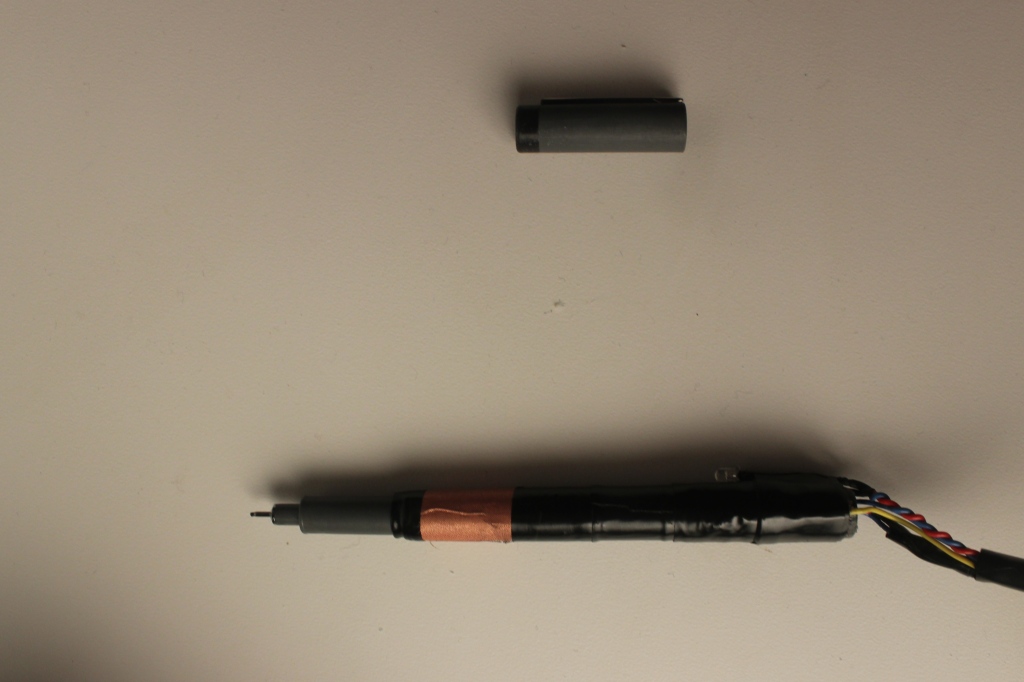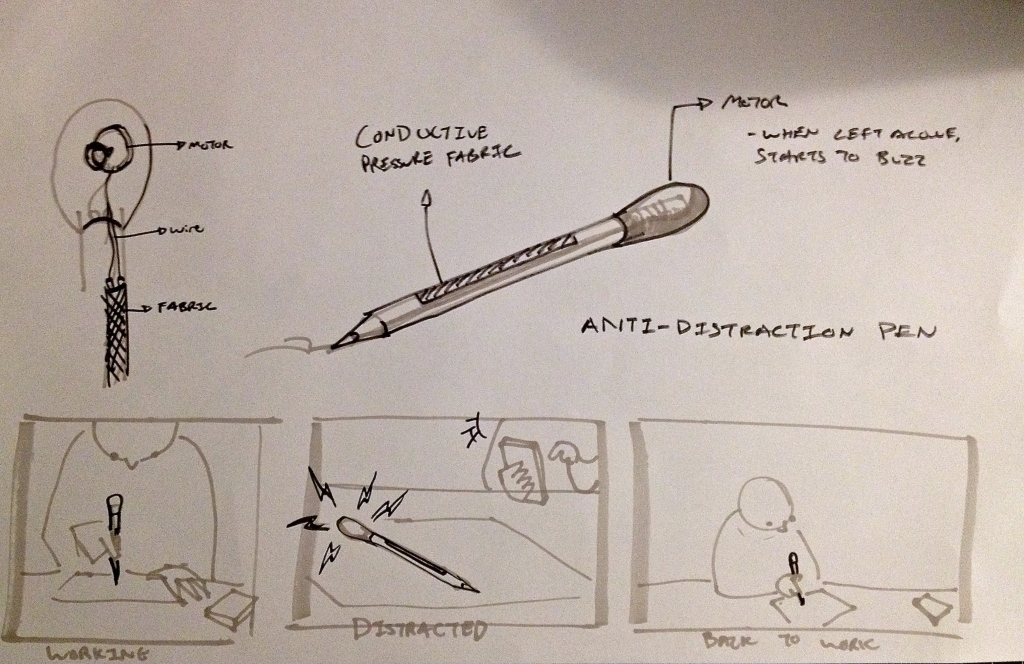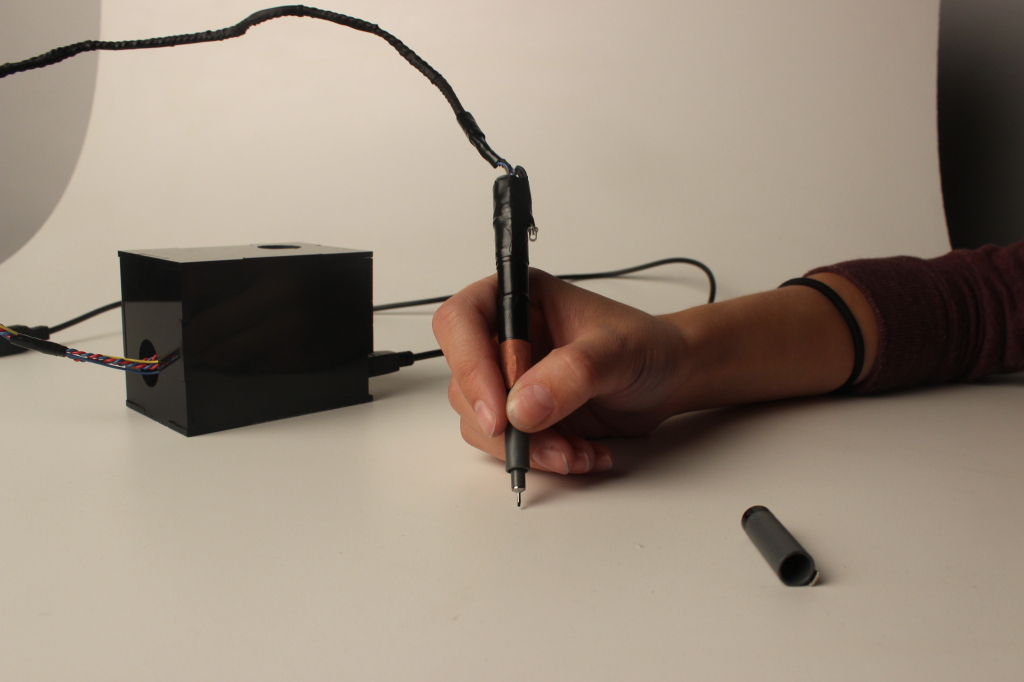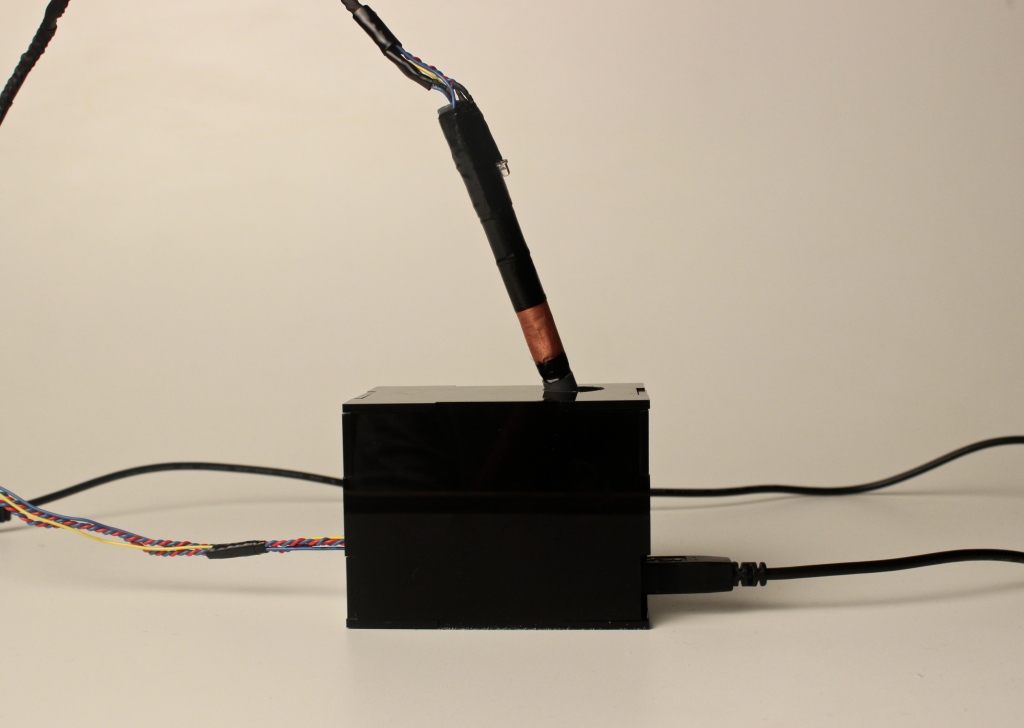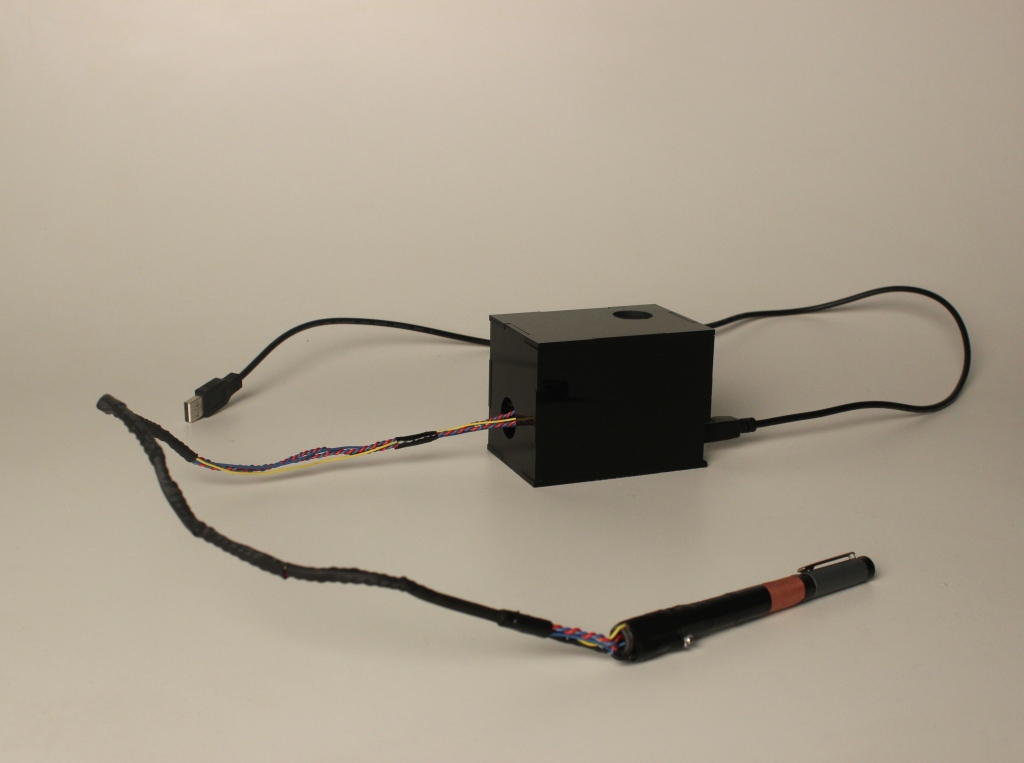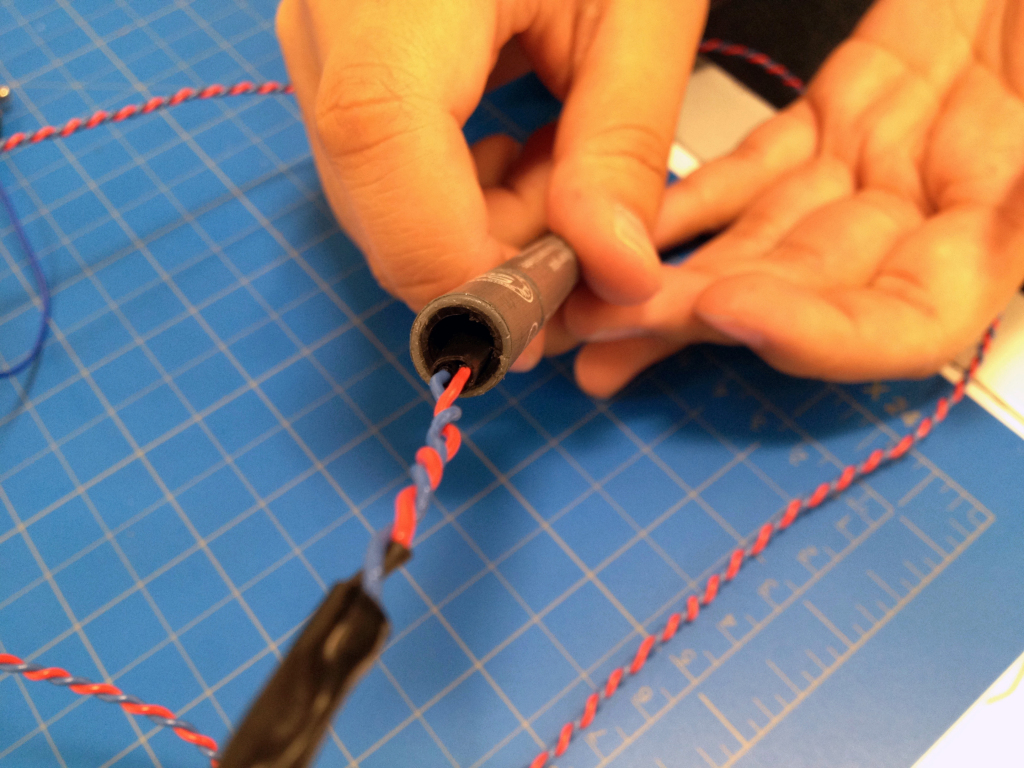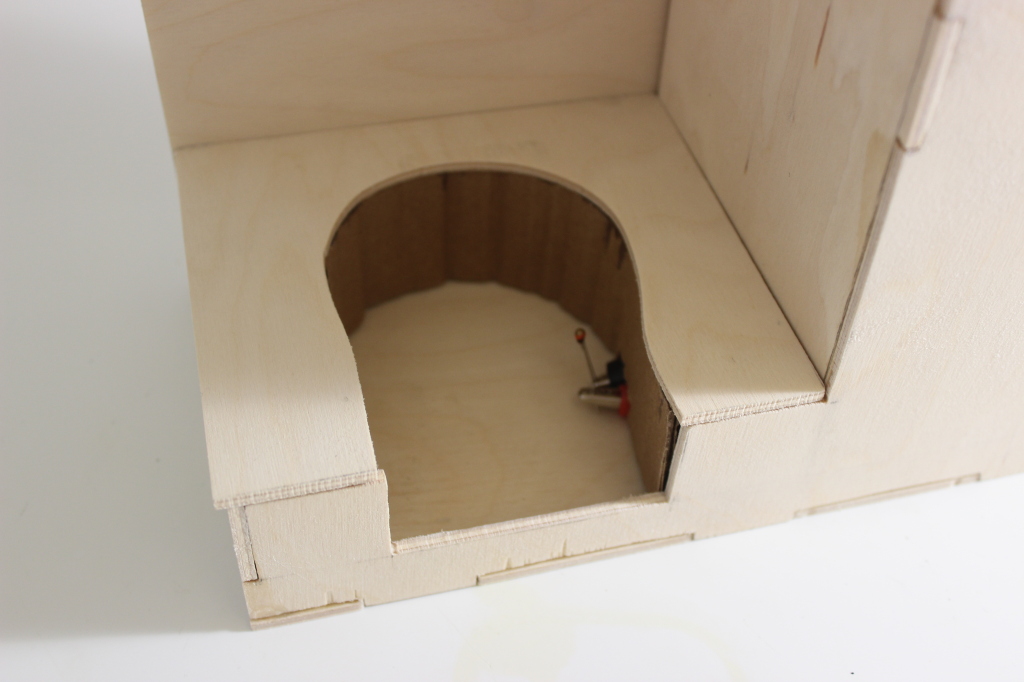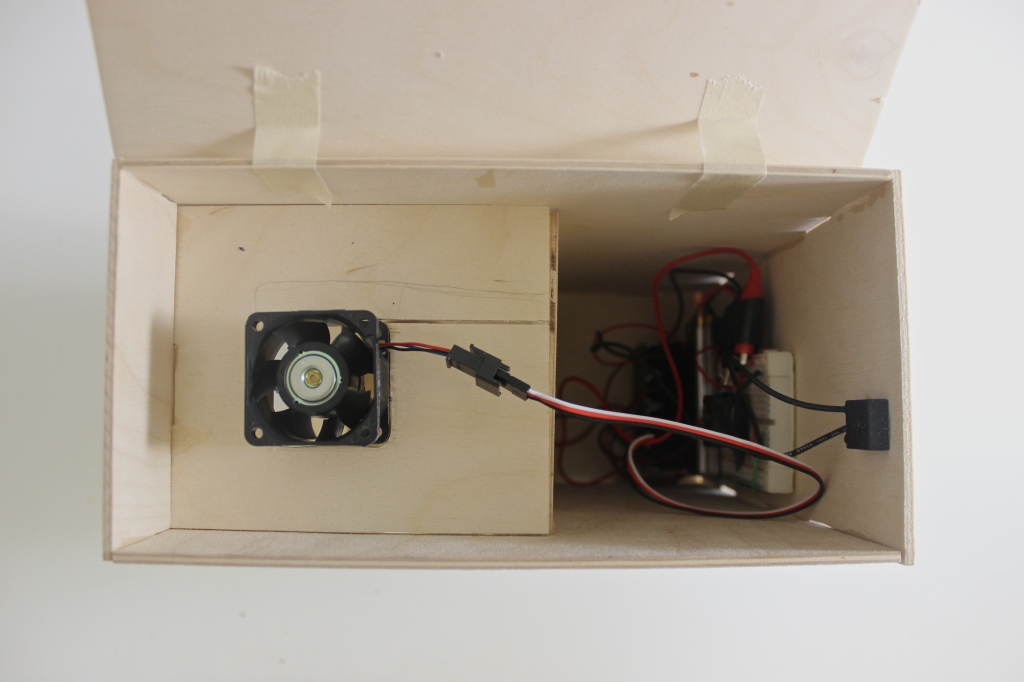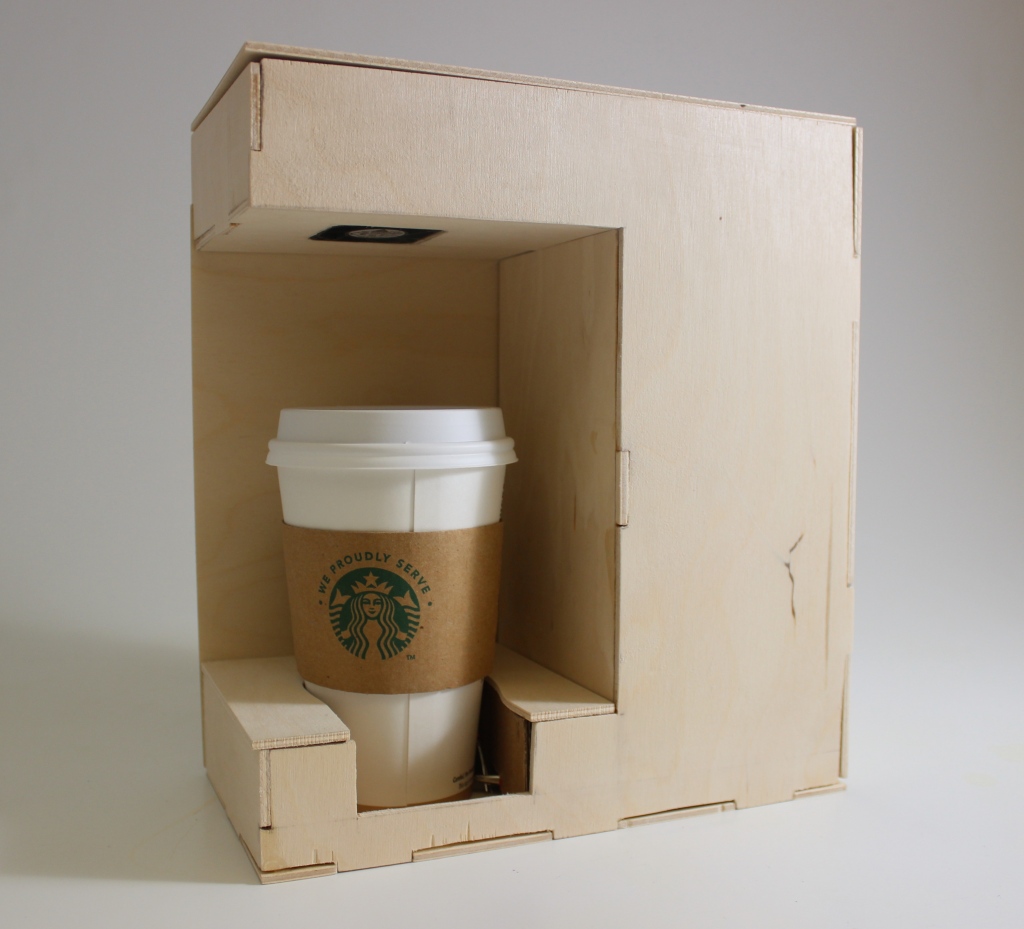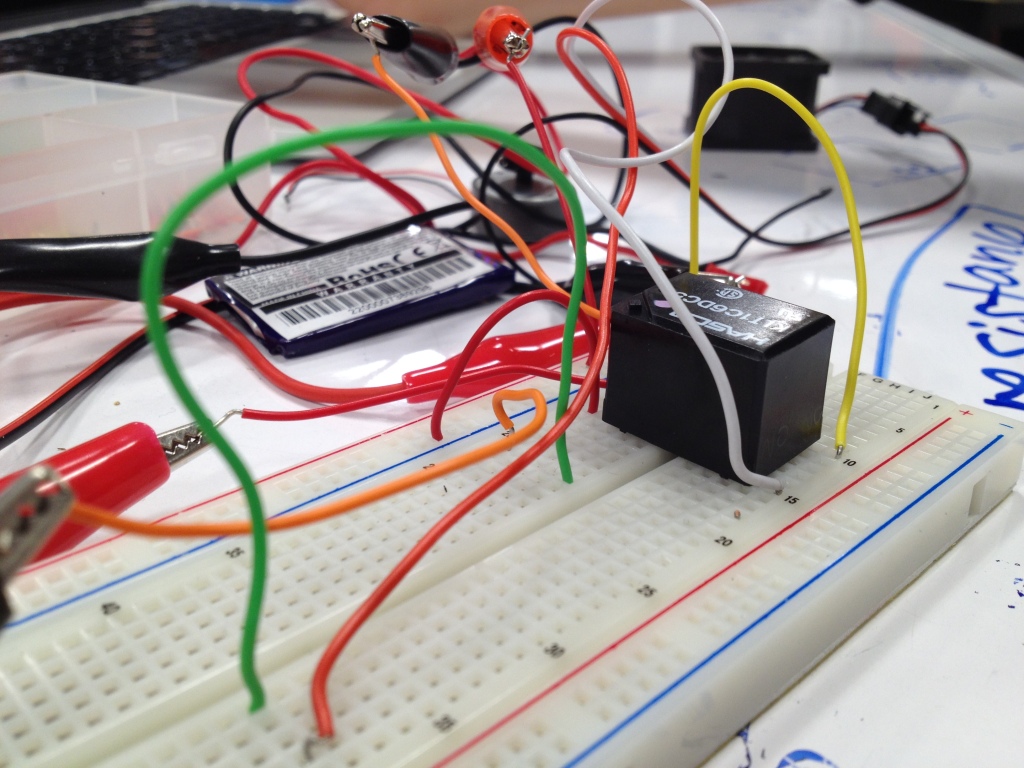Jesse Klein
Zac Mau
We developed the Whereband to help active individuals come together to create a better exercising experience. The Whereband uses a Light Blue Bean to broadcast its GPS coordinates to a database, from that point the GPS coordinates are transmitted to the nearest tracked phone. On the band itself are several Servo motors which apply light pressure in the direction of the closet user. This gives runners or cyclists or etc a physical sensation that guides them to other users, creating a more motivating and social exercising session.
Web Code:
Video:
Photos:
]]>Jesse Klein
Zac Mau
We are developing a wearable armband technology that aims to bring runners, cyclists, etc together. The armband will transmit a geographic location that will be picked up by another identical armband that will process that location and interpret it as sensory feedback. Using a compass and small servos, the armband will provide a slight pressure sensation in the direction of the other armband, with the intensity varying on the proximity of the second band. This will allow runners and other active individuals to find each other for the sake exercising together. Through this we hope to encourage a more social and motivating exercise experience.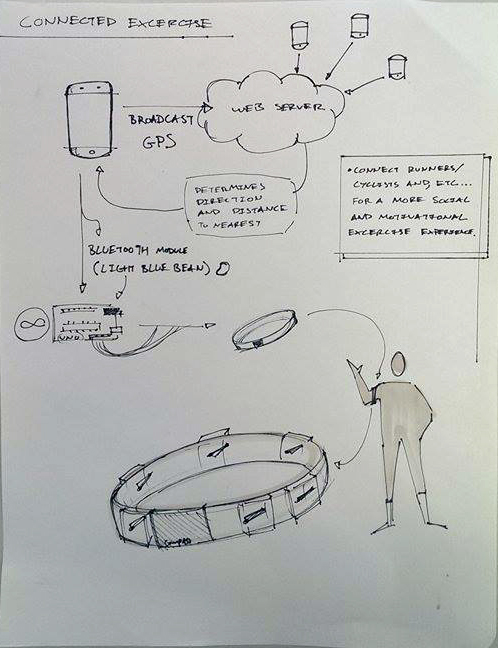
Introduction
Acting as one small piece of the visually and musically symphonic Dream Machine, our instrument, Reflections, adds an expansive but calming atmosphere to the greater composition. The idea behind our machine was to visualize the sound variables of beat, tone and tempo through a series of lights bouncing off mirrors that correlate to the variables; in effect the light would bounce around and behave in accordance with the rhythm. In addition to the reflecting light, we incorporated a Rain-Maker effect, by adding bits of steel and plastic inside the rotating disks, we allowed for a steady and satisfactory rain sound that also matches the music. Best experienced in the dark with a single light source projected onto the mirrors, Reflections adds both a sonic and visual cascade to the Dream Machine.
Video
]]>
Roles: Rachel Ciavarella as tutor/designer, Judy Han as integrator/designer, and Zac Mau as scribe/designer
Introduction
In this project we explored the concept of distraction; its pervasive effect on our generation and how we try to overcome it. Being distracted from your work is actually caused by having too much work to do; our brains only have so much processing power, the more tasks to complete the more that power gets diffused, resulting in small amounts of thought being applied to multiple items rather than lots of power being focused into one task.
On top of the sheer amount of work students are faced with every day, easy access to entertainment and learning how to use complicated tools only spreads student’s attention thinner.
Social media, mobile games and the internet involve less brain processing power because there is less problem solving involved than in standard university-level coursework, which is why students often find themselves scrolling through buzzfeed for hours instead of focusing on their problem sets.
To address this problem, we developed a pen that refocuses attention. The idea being that when a student is working and finds themselves becoming distracted and they put down their pen, it will remind them and almost force them to get back to work.
Video
Technical Notes
The program we designed actually aims to take analog input to turn off something, rather than turn it on, the output then being a lack of motion. In our case, the pen is constantly vibrating while not being used, but while it is being held and used, the contact shuts off the motor. We took a standard felt tip pen, hollowed it out and inserted a small G20114 motor, which is wired to conductive fabric, and then wired back to an Arduino Uno, housed in a small box which also acts as a pen holder. The actual Arduino Uno code takes the analog contact input, sets that as a maximum sensor-value threshold, and when that threshold is not reached it causes the motor inside to vibrate. We also wired a purple LED on the outside of the pen as a parallel output that proves power is running to the motor. All of this is hooked up to a Switch Pushbutton so the user can turn the pen off when they put it in the housing that holds the Arduino.
Photos
]]>Roles: Sara Johnson as tutor/scribe, Zac Mau as designer/scribe, Ashley Lai as integrator
Introduction
While coffee is brewed near boiling temperatures, the optimal temperature to enjoy a hot drink is 70℃. At this lowered heat, your taste bud can register the full range of flavor profiles and avoid dangerous burns.
To allow premium brewing while avoiding a long wait for your caffeine, we have created the Coffee Cooler. A paper coffee cup is inserted into the cup compartment with the lid removed, and if a temperature above 70℃ is registered, the mounted fan turns on, cooling the drink.
We have create a one-in-one-out system that is activated by the liquid’s temperature and outputs physical air circulation from the fan. The heat is registered by a thermistor, which electrically triggers a magnetized coil by increasing current flow. The switch allows an external battery to power the fan and cool the drink to the desired temperature.
Technical Notes
The temperature of the water is measured by at 10K thermistor through the coffee cup, which accurately transmits the drinker’s temperature because of the paper’s low specific heat capacity. Upon contact with the hot drink, the thermistor decreases in resistance of the thermistor decreases its resistance linearly byR = -kTbecause of its negative temperature coefficient . Reducing the resistance increases the current flow to a 5V relay, magnetizing the control coil and physically moving the relay’s internal switch. The switch completes the second circuit, allowing a 3.7V LiPO battery to power a brushless 40mm fan.
PIECES
tactile on-off switch
5V relay HASCO KLT1C6DC5
10K thermister
9V batteries
3.7V LiPO 1600mAh
dc brushless fan FFB0412SHN
ideal for cooling:
5-7v: solid wind, audible
need at least 4.2 volts
3v – turns off
specs:
voltage: 4-13v
current: .6 max, .5 ideal
power: 6 watts
Photos
]]>
